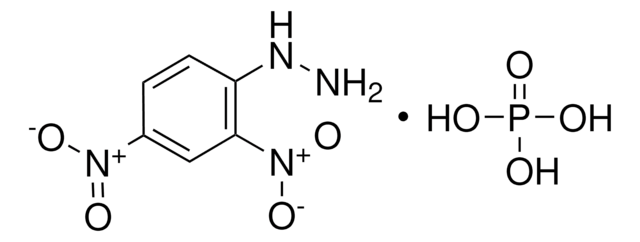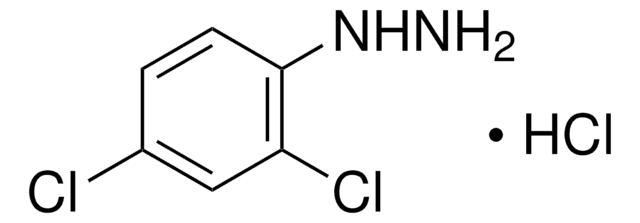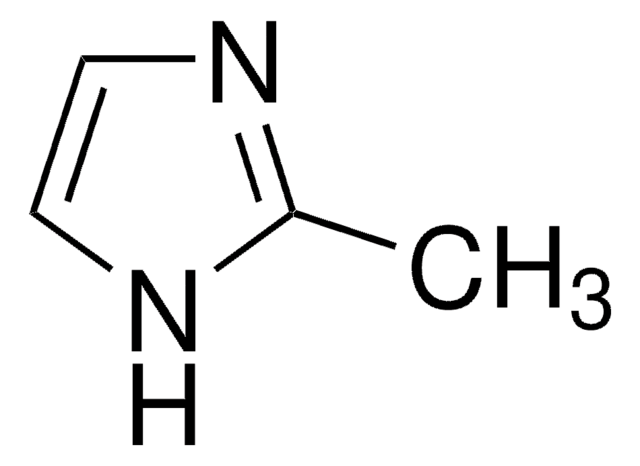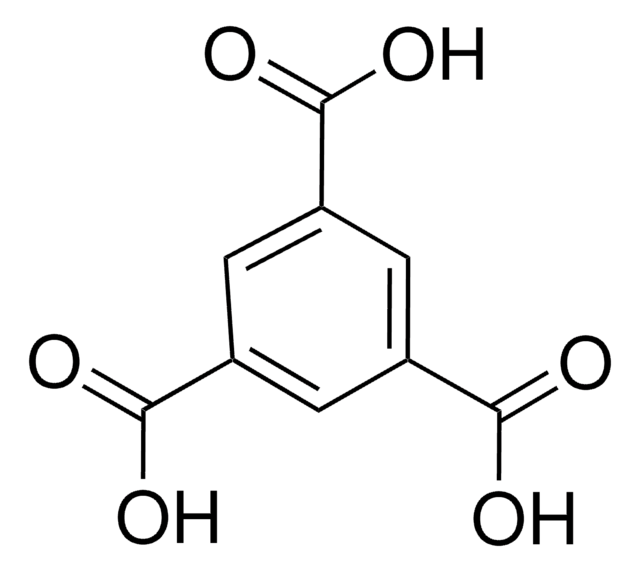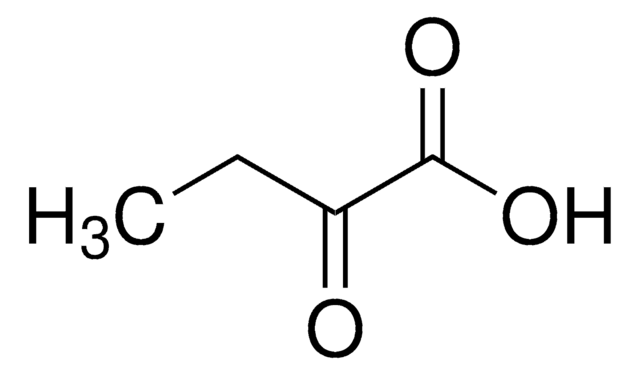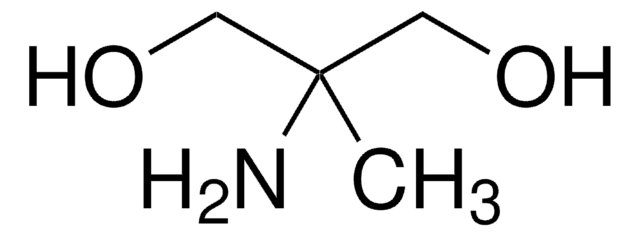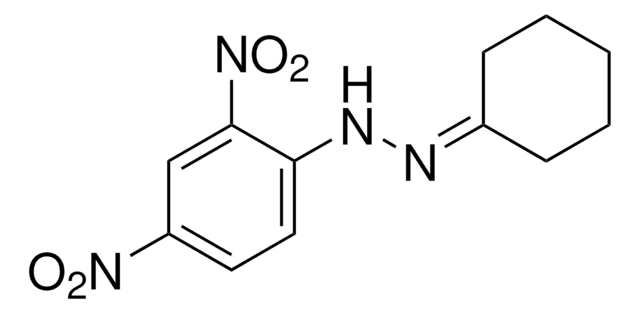18189
2,4-Dinitrophenylhydrazine hydrochloric acid solution
~0.005 M in ethanol, for TLC derivatization
Sign Into View Organizational & Contract Pricing
All Photos(1)
About This Item
Empirical Formula (Hill Notation):
C6H6N4O4
CAS Number:
Molecular Weight:
198.14
Beilstein:
615586
MDL number:
UNSPSC Code:
41116105
PubChem Substance ID:
NACRES:
NA.22
Recommended Products
grade
for TLC derivatization
Quality Level
concentration
~0.005 M in ethanol
technique(s)
thin layer chromatography (TLC): suitable
refractive index
n20/D 1.374
density
0.843 g/mL at 20 °C
suitability
in accordance for application
storage temp.
2-8°C
SMILES string
NNc1ccc(cc1[N+]([O-])=O)[N+]([O-])=O
InChI
1S/C6H6N4O4/c7-8-5-2-1-4(9(11)12)3-6(5)10(13)14/h1-3,8H,7H2
InChI key
HORQAOAYAYGIBM-UHFFFAOYSA-N
General description
2,4-Dinitrophenylhydrazine hydrochloric acid solution is a derivatization reagent.
Application
2,4-dinitrophenylhydrazine HCl solution was used in detecting Artemisinin derivatives usingf TLC silica gel sheets. It may be used in determination of carbonyl groups. It may also be used in a procedure for coating in situ silica gel with prepacked cartridges.
Signal Word
Danger
Hazard Statements
Precautionary Statements
Hazard Classifications
Eye Irrit. 2 - Flam. Liq. 2 - Met. Corr. 1
Storage Class Code
3 - Flammable liquids
WGK
WGK 2
Flash Point(F)
57.2 °F
Flash Point(C)
14.0 °C
Personal Protective Equipment
dust mask type N95 (US), Eyeshields, Gloves
Choose from one of the most recent versions:
Already Own This Product?
Find documentation for the products that you have recently purchased in the Document Library.
R Fields et al.
The Biochemical journal, 121(4), 587-589 (1971-02-01)
A method is described for determining carbonyl groups that is especially suitable for use with proteins and peptides. It involves the determination of the extinction at 370nm of a sample solution after adding 2,4-dinitrophenylhydrazine. The reaction of 2,4-dinitrophenylhydrazine with pyruvoylglycine
Jean-Robert Ioset et al.
PloS one, 4(9), e7270-e7270 (2009-10-01)
Malaria continues to be one of the major public health problems in Africa, Asia and Latin America. Artemisinin derivatives (ARTs; artesunate, artemether, and dihydroartemisinin) derived from the herb, Artemisia annua, are the most effective antimalarial drugs available providing rapid cures.
S B Tejada
International journal of environmental analytical chemistry, 26(2), 167-185 (1986-01-01)
A procedure for coating in situ silica gel in prepacked cartridges with 2,4-dinitrophenylhydrazine (DNPH) acidified with hydrochloric acid is described. The coated cartridge was compared with a validated DNPH impinger method for sampling organic carbonyl compounds (aldehydes and ketones) in
Ravi Ch Bollineni et al.
Journal of proteomics, 74(11), 2351-2359 (2011-06-15)
Reactive oxygen species (ROS) can oxidize proteins at almost any amino acid residue. Whereas some modifications are reversible within the cells, the higher oxidation states are especially irreversible. These irreversible post translational modifications are widely used as biomarkers of oxidative
María Linares et al.
Journal of proteome research, 10(4), 1719-1727 (2011-01-18)
Oxidative stress plays a critical role in the pathogenesis of a number of diseases. The carbonyl end products of protein oxidation are among the most commonly measured markers of oxidation in biological samples. Protein carbonyl functional groups may be derivatized
Our team of scientists has experience in all areas of research including Life Science, Material Science, Chemical Synthesis, Chromatography, Analytical and many others.
Contact Technical Service
